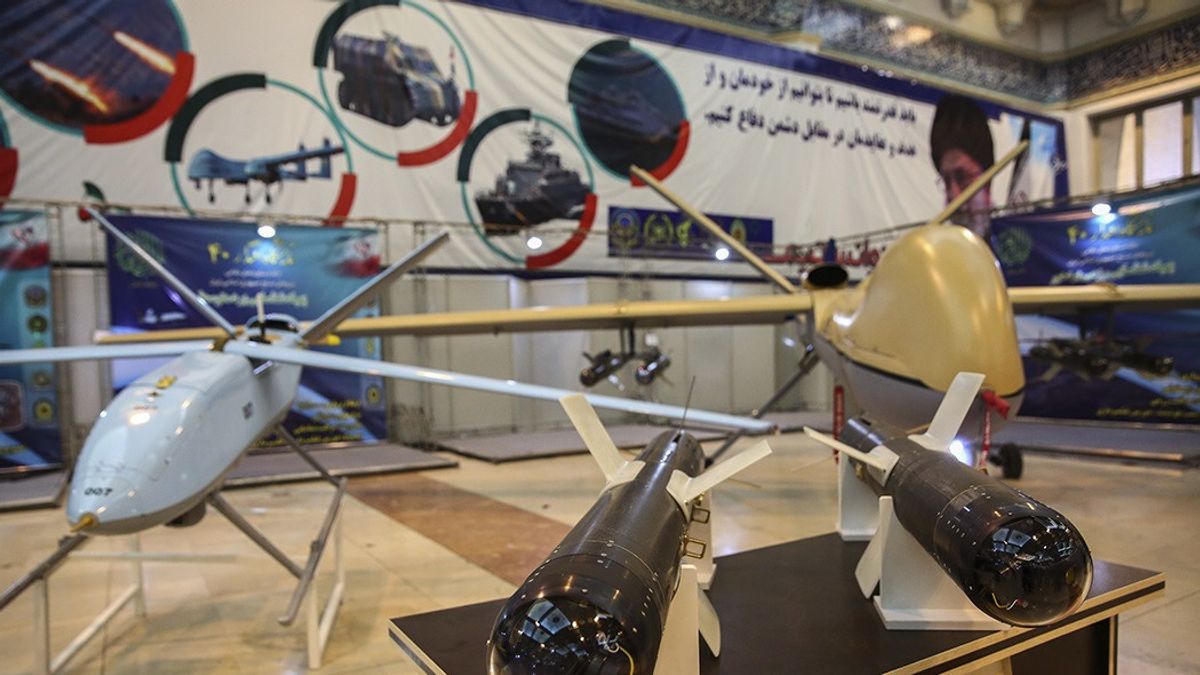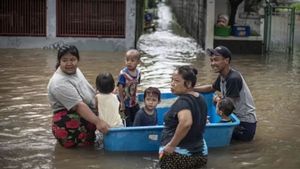JAKARTA - Western anger over the supply of Iranian drones later used in the conflict in Ukraine is proof of its effectiveness, according to military officials Tehran.
Iran's Chief of Military Staff Major General Mohammad Bagheri said the statement condemning supply was "most false" but showed Iran's "effectiveness, importance and ranking" of work on drone development.
"The country's armed forces will continue to grow and develop their drones. We will cooperate with other countries in drones," said General Bagheri, according to Iran's Tasnim news agency, as reported by The National News December 26.
"Our drone system is ranked high in the world in terms of accuracy, durability and continuity of operations and mission implementation, and they carry out various missions," he added.
Iran has acknowledged supplying what analysts call one-way attack drones, small drones equipped with explosives flying directly to the target, claiming the weapons were supplied to Russia before the war.
In addition, Iran has also supplied a larger drone, which can be equipped with a missile, Mohajer, which has also been supplied to allied militias in Iraq.
Separately, Ukraine said it had shot down a number of drones since August, when the US said Iran had sent hundreds of planes to Russia.
The most popular drone sent is believed to be the Shahed-136 model, which Iran and its allies have widely used, including the Houthis militia in Yemen, to attack energy infrastructure and shipping in the Middle East.
It is known, drones have been used in the same way in Ukraine, attacking large energy infrastructure targets such as power plants, killing at least 10 gigawatts of power from Ukraine's 50 gigawatt capacity. Millions of people are left without electricity or heating as the night temperature drops well below zero.
Iran is said to have supplied drones to Russia, as Moscow is considered to have run out of accurate missiles and drones, dubbed precision guided ammunition by analysts.
Both Ukraine and Russia are said to lack artillery ammunition, which has led to concerns that the conflict will enter a prolonged stalemate.
The high intensity of the conflict in Ukraine, which has often resulted in Russia launching a number of explosive missiles and drones in a single wave of attacks, has consumed Russian weapons.
Western sanctions targeting component suppliers, including companies supplying microchips for sensors and navigation equipment for drones and missiles, have slowed Russia's capacity to produce enough weapons.
Meanwhile, Iran's supply of drones to Russia has sparked outrage in Europe and the US, with several diplomats even saying it has halted the possibility of renewing the 2015 Nuclear Deal to ease sanctions, in exchange for Iran receiving UN inspections of nuclear sites.
In September, EU foreign policy chief Josep Borrel said: "We just don't see an agreement coming together anytime soon, while Iran continues to kill its own citizens and sell UAVs [unmanned aerial vehicles] to Russia."
The US and the European Union have hit Iran with new sanctions over drone supplies, which threaten to undermine US$60 billion in Western efforts to equip Ukraine with weapons to fend off Russia's invasion.
The English, Chinese, Japanese, Arabic, and French versions are automatically generated by the AI. So there may still be inaccuracies in translating, please always see Indonesian as our main language. (system supported by DigitalSiber.id)













